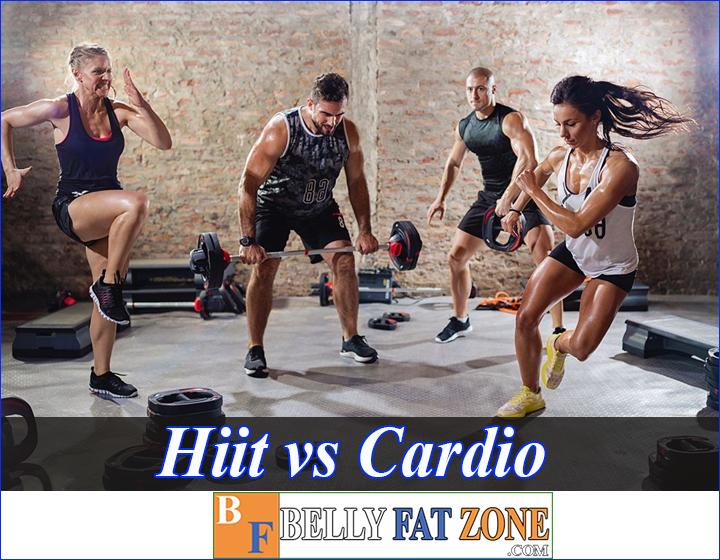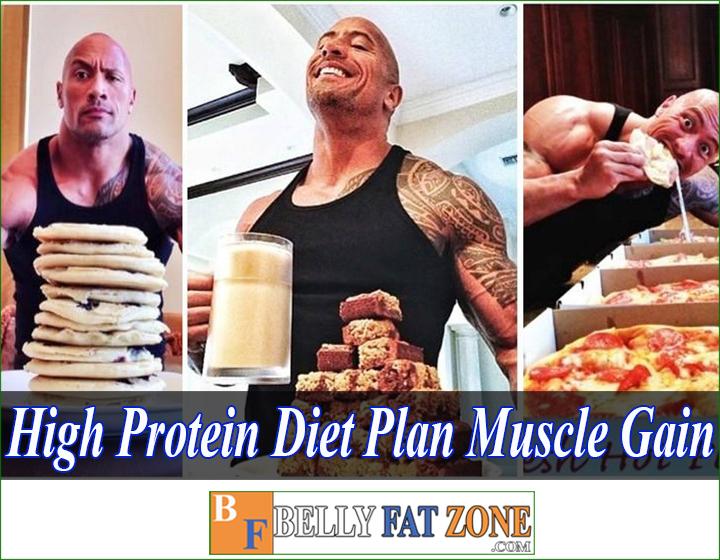With the hustle and bustle of today's life, it is tough for most people to make time for exercise, although everyone knows that exercise is essential to their lives for their health and well-being, health, and future.
Time is the only thing we can't get back and saving time for training and still achieving the desired effect is really what everyone in this world craves.
And the problem of losing weight or losing belly fat is one such problem; in this article, we will learn a training method that will save you many times more time and still achieve the desired results.

But which method is better than the other? Or Who can practice these methods? You need to follow the end of the article from there to prepare and position yourself accordingly and then choose the right method for you.
To save more time, you need to prepare yourself with a certain background at first to use the method that will help you optimize your time and still achieve the desired results.
There was a time when steady-state training was the norm. Instead, you'll be outdoors or on a treadmill to maintain a moderate intensity throughout your workout.
In recent years this has changed. High-intensity interval training (HIIT) has become more popular these days.
These exercises involve varying intensity – training more aggressively at certain intervals throughout the workout. These shorter, more intense workouts can deliver more results in less time.
- This sounds great, but is HIIT really better than steady-state cardio?
- Which should you focus on if you are trying to lose weight and get in shape?
- Can you really enjoy your training if you're working so hard?
Is Hiit Better Than Cardio?
Is high-intensity interval training exercise better than cardio exercise?
This is a question that concerns many people in this world because they think that exercising with high intensity will save them more time and spend that time on other things in their lives living.
However, we need to remember that anything, a condition, or a factor is for each person as each individual is different. This exercise may be suitable for this person but not suitable for this person who works for someone else. It may not be right for you right now.
Cardio exercise, which can be practiced by almost anyone regardless of age, suitable for exercise intensity, will not create sudden heart rate or metabolism increases in the short-term body.
Only when you have gone through these basic exercises should you learn the most intense exercises to save more time.
So the answer to the question is high intensity exercise better or better cardio. It depends on the individual at the time regarding weight factors about environmental factors, and good health.
Most importantly, you should consult a nutritionist in a doctor who has in-depth knowledge of your own positioning point to choose the right exercise method.
Basics of HIIT
HIIT involves training to push your body out of your comfort zone for anywhere from 5 seconds to 8 minutes, depending on the exercise you're doing.
The idea of working at around 80% – 95% of your maximum heart rate if you are monitoring your target heart rate zones or 9 to 10 on the stress chart is also known as the perceived exertion rate.
Following each workgroup is a recovery period that may be shorter or longer. During this time, your heart rate drops to about 3 to 4 with exertion. You alternate periods of work and rest for a total of 20 to 60 minutes, depending on your fitness level, time constraints, and goals.
Pros and cons of HIIT
Advantages
|
Defect
|
Advantages of HIIT
HIIT has several benefits, especially for those who already have exercise experience.
Improve the performance
Several studies have shown that while steady-state training taxes the aerobic system, HIIT exercises can stimulate aerobic and anaerobic systems.
Improve insulin sensitivity
The more sensitive your body is to insulin, the less insulin your body needs to lower your blood sugar. In terms of exercise, that means your HIIT can help your exercising muscles use glucose for fuel more efficiently.
Improve post-burn calories
One of the best benefits of HIIT is how many calories your body burns post-workout to get your system back to where it was before you worked out. This is also known as post-exercise oxygen consumption (EPOC) or post-burn. The harder you work during your workout, the longer it takes for your body to return to normal, which means you'll burn more calories in the hour or so following your workout.
Burn belly fat
Research shows that HIIT may be more effective at reducing belly fat than other forms of exercise.
Improve heart health
Doing HIIT can help lower your blood pressure and improve your heart health.
Shorter exercises
Because you're working so hard, you'll get the benefits of training in less time than you would from slower, longer workout sessions.
A study published in the Journal of Sports Science and Medicine has shown that just three 10-minute HIIT sessions per week can help your body deliver oxygen more efficiently to your muscles and improve your metabolic health your metabolism.
Disadvantages of HIIT Training
HIIT training has its downsides and isn't for everyone.
May be uncomfortable
While you can modify the exercises to suit your fitness level, the idea is that you should get out of your comfort zone as much as possible. So these exercises are challenging.
Not for beginners
If you are starting a completely sedentary lifestyle or returning to exercise after an injury, HIIT is probably not where you want to start.
You should have a basic background in cardiovascular training before doing HIIT. Then, if you are in good health and active, you can make modifications if necessary.
Risk of injury
High-intensity exercises like sprinting, plyometrics, and jumping carry a risk of injury if your body is not prepared for that type of movement.
Risk of burnout or overtraining
Doing too much HIIT can lead to burnout, increasing your risk of quitting. Experts recommend limiting HIIT workouts to 1-2 times a week to avoid overtraining.
Sample HIIT exercise
HIIT workouts can be set up in a variety of ways. For example, Tabata exercises involve working very hard for 20 seconds with a recovery time of only 10 seconds. Then, you repeat that for a total of just four minutes, as in this cardio Tabata workout.
You can also work out with longer intervals, such as 40-second high-intensity interval training and 20-second recovery, as in this 40-20 high-intensity interval workout. The shorter the recovery period, the harder the workout because you're never quite ready for your next workout.
The latter includes a variety of high-intensity, high-impact cardio (modify the jumping motion to low-impact if you need to) and a 1:1 work-to-rest ratio. That means the group work and rest groups have the same duration.
The rest are active (on-site marching, for example). The idea is to keep going, even when you feel tired. However, if you feel dizzy or can't breathe, take a longer break.
| Time | Exercise | RPE |
| 5 min | Warm up with light-to-medium cardio (walking or easy exercises like step touches and knee lifts) | 4-5 |
| 30 seconds | Plyo jacks | 8 |
| 30 seconds | March in place | 4 |
| 30 seconds | Plyo lunges | 8 |
| 30 seconds | March in place or step touch | 4 |
| 30 seconds | Squat jumps | 8 |
| 30 seconds | March in place or step touch | 4 |
| 30 seconds | Burpees | 9 |
| 30 seconds | March or step touch | 4 |
| 30 seconds | Jumping jacks | 8 |
| 30 seconds | March or step touch | 4 |
| 30 seconds | Jogging with high knees | 8-9 |
| 30 seconds | March or step touch | 4 |
| 30 seconds | Long jump | 9 |
| 30 seconds | March or step touch | 4 |
| 30 seconds | Speed skaters | 9 |
| 30 seconds | March or step touch | 4 |
| 30 seconds | Alternating jumping lunges | 9 |
| 30 seconds | March or step touch | 4 |
| 30 seconds | Mountain climbers | 9 |
| 30 seconds | March or step touch | 4 |
| 5 min | Cool down and stretch | 4 |
| Total exercise time 20 minutes |
The Basics of Steady State Cardio Training

Steady-state or moderate-intensity cardio is something many of us do. This involves training at the right pace and intensity level for the entire workout.
That would be somewhere between 4 and 5 on the perceived exertion scale. So the idea is that working at a level that you can talk to might be a little difficult.
Pros and cons of Steady-State Training
|
|
Advantages of Steady State Training
Steady-state training also has a lot of benefits for your body.
Reduce stress on the cardiovascular system hệ
Since you're working at a lower intensity, you can improve your endurance without the stress on your heart and body like more intense exercise.
Increase endurance
Longer, slower exercise strengthens both your heart and muscles.
Improve health
Like HIIT, steady-state cardio helps your heart work more efficiently, delivering oxygen to your muscles faster. Steady-state cardio also lowers blood pressure and reduces stress and anxiety, along with a healthy diet, which can help you lose weight.
Faster recovery
Because you're putting less strain on your heart and body, you recover faster and can usually work out the next day with no problems.
Improves fat utilization
When you work out at a lower intensity, fat will be your main source of fuel. Staying at that level allows you to conserve glycogen stores for more intense workouts.13
That doesn't necessarily mean you burn more fat, just that your body better uses fat for fuel.
Increased slow-twitch muscle fibers
Slow-twitch muscle fibers are more efficient at using oxygen for energy so that you can exercise for longer periods of time.14 This improves your aerobic metabolism, which essentially is how your body produces energy.
More interesting
Part of the reason we stick with exercise is that to some extent, we enjoy it, or at least we can tolerate it. It is much more comfortable to work at a lower intensity than at a higher intensity. Some exercisers may even give up after overtraining just because it's too uncomfortable.
Disadvantages of Steady-State Training
Naturally, there are downsides to steady-state training.
Waste time
If you're trying to lose weight, you have to exercise for longer periods of time if you want to burn enough calories.
Risk of injury from overuse
Performing the same movements repeatedly can lead to repetitive stress injuries15 unless you do a lot of cross-training.
Boring
Not everyone likes long and slow workouts, especially if the weather is bad and you have to work out on a treadmill, stationary bike, or another cardio machine. That type of workout can feel tedious if you do it all the time.
Weight loss plateau
Doing only steady-state cardio without changing things can lead to steady-state. You need to challenge your body with new and different activities, so it can continually change and grow stronger.
Should you HIIT or Steady-State?
With all that in mind, which one is right for you? The answer really depends on your fitness level and goals more than anything else. And remember that experts don't recommend doing HIIT more than two to three times a week.
Try HIIT if…
- You, as an experienced exerciser, feel comfortable with intense workouts.
- You want to focus on losing weight and burning more calories during and after your workout.
- You want shorter workouts because of your busy lifestyle.
- You want workouts that combine different exercises and intensities to make things fun.
- You want to build endurance quickly.
Stick with the steady-state if…
- You're just starting or coming back from a long fitness break.
- You can't do high-impact exercises or don't like high-intensity work.
- You're training for an endurance race, such as a half-marathon or marathon (although you can do some high-intensity workouts depending on the training plan you're following).
- Your doctor has told you to avoid intense exercise.
Enhanced HIIT. training
Beginners can increase their endurance and stamina during HIIT by starting with interval aerobic exercise. That involves varying the intensity just enough to push you out of your comfort zone, but not so far away that you're miserable or short of breath. This beginner interval exercise is a great place to start.
As you work out, you can begin to increase the intensity at intervals from week to week. Another key to achieving HIIT is consistency. Regular cardio is how you build a foundation that allows you to work harder and get more out of your workouts.
Mix both exercises
In a perfect world, your exercise routine would include both steady-state and HIIT. It might look something like this:
- Day 1: Exercise with a 30-minute sprint interval
- Day 2: 40 minutes of cardiovascular endurance
- Day 3: Rest or light activity
- Day 4: Tabata Cardio Challenge 25 minutes
- Day 5: 30 minutes or more of moderate cardio, like walking, jogging, cycling, etc.
- Day 6: Rest or light activity
- Day 7: 30-minute aerobic cardio or rest
Above, BellyfatZone has shared with you the basic concepts of HIIT and Cardio to have a more detailed look at these two popular types of exercise.
View more:
- What Is Cardio Exercise? What Are The Most Effective?
- Hiit Cardio Routine For Fat Loss – 30 day hiit workout for beginners
- List Of More 60 Cardio Exercises – With Photo Tutorials and Videos to Help You Practice Anywhere
Hopefully, the information above has helped you to gain some more knowledge about “HIIT vs cardio”, and bring some small value to you. Please share this article if you feel it is useful. Thanks!






